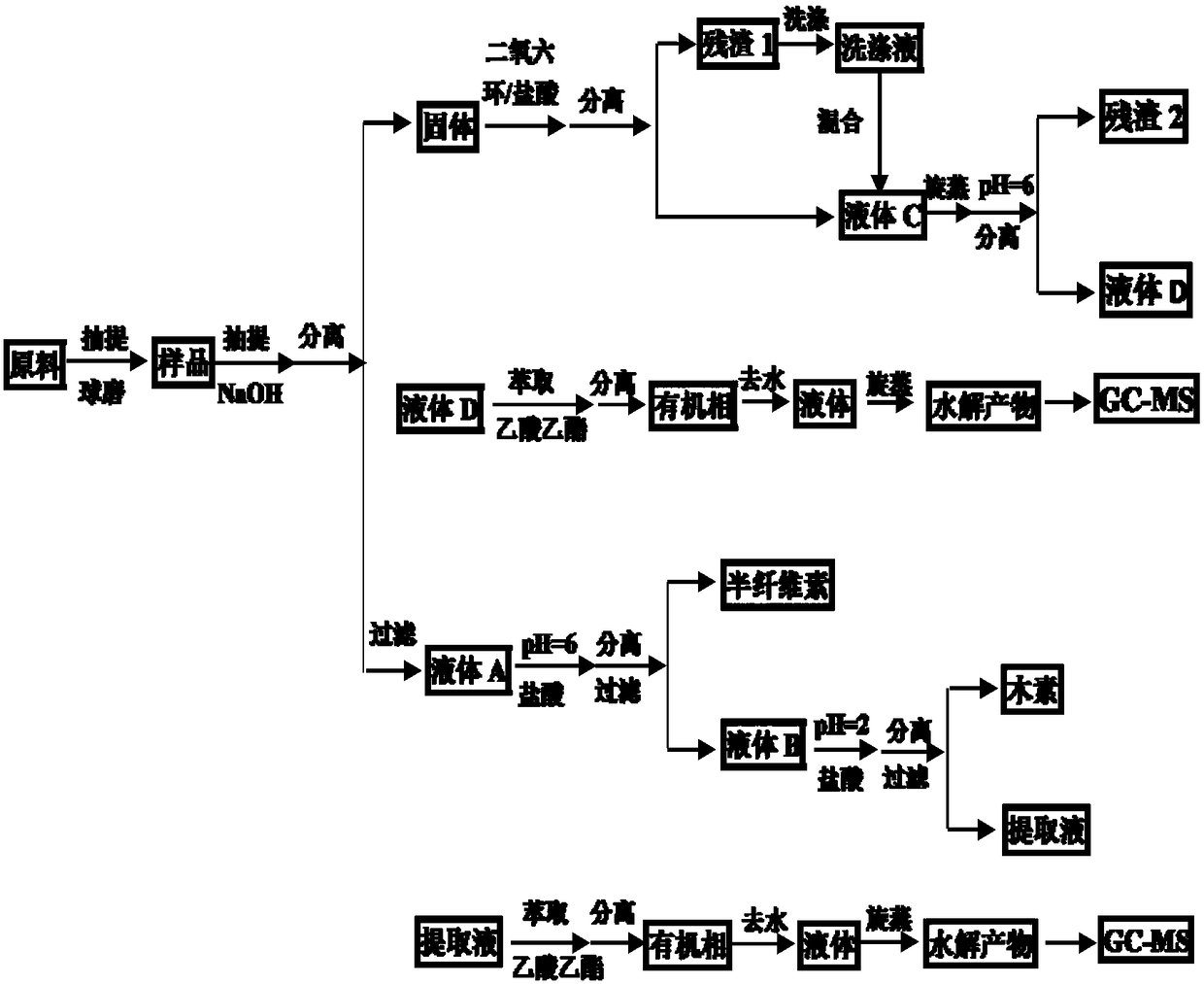Method for improving efficiency of ferulic acid and p-coumaric acid separation
A technology for p-coumaric acid and separation efficiency, applied in the field of effective utilization of biomass resources, can solve the problems of large amount of solvent, restrictions on the wide application of ferulic acid, and high cost, and achieve the effect of improving extraction efficiency
- Summary
- Abstract
- Description
- Claims
- Application Information
AI Technical Summary
Problems solved by technology
Method used
Image
Examples
Embodiment 1
[0023] Such as figure 1 Shown, a kind of method that improves ferulic acid and p-coumaric acid separation efficiency, operates as follows:
[0024] 1. After hydrolyzing ball-milled bagasse with NaOH solution, separate solid and liquid A; adjust the pH of liquid A to 5, add ethanol with a volume concentration of 95% to precipitate and separate 12% hemicellulose, obtain liquid B, and remove ethanol by rotary evaporation.
[0025] 2. Adjust the pH of liquid B to 1, and centrifuge to separate 10% lignin to obtain an extract;
[0026] 3. Extract the extract with ethyl acetate, separate the organic phase, remove the water from the organic phase, and spin evaporate to obtain ferulic acid and p-coumaric acid.
[0027] 4. Treat the solid with 100ml of dioxane / hydrochloric acid mixed solution, reflux reaction in an oil bath at 80°C for 3 hours, and separate after cooling to obtain residue 1 and liquid C; wherein, the volume ratio of dioxane / hydrochloric acid is 9:1, HCl concentration ...
Embodiment 2
[0032] Such as figure 1 Shown, a kind of method that improves ferulic acid and p-coumaric acid separation efficiency, operates as follows:
[0033] 1. After hydrolyzing ball-milled bagasse with NaOH solution, separate solid and liquid A; adjust the pH of liquid A to 6, add ethanol with a volume concentration of 95% to precipitate and separate 14% hemicellulose, obtain liquid B, and remove ethanol by rotary evaporation .
[0034] 2. Adjust the pH of liquid B to 1-2, and centrifuge to separate 8% lignin to obtain an extract;
[0035] 3. Extract the extract with ethyl acetate, separate the organic phase, remove the water from the organic phase, and spin evaporate to obtain ferulic acid and p-coumaric acid.
[0036] 4. Treat the solid with 100ml of dioxane / hydrochloric acid mixed solution, reflux reaction in an oil bath at 80°C for 3 hours, and separate after cooling to obtain residue 1 and liquid C; wherein, the volume ratio of dioxane / hydrochloric acid is 9:1, HCl concentrati...
PUM
 Login to View More
Login to View More Abstract
Description
Claims
Application Information
 Login to View More
Login to View More - R&D
- Intellectual Property
- Life Sciences
- Materials
- Tech Scout
- Unparalleled Data Quality
- Higher Quality Content
- 60% Fewer Hallucinations
Browse by: Latest US Patents, China's latest patents, Technical Efficacy Thesaurus, Application Domain, Technology Topic, Popular Technical Reports.
© 2025 PatSnap. All rights reserved.Legal|Privacy policy|Modern Slavery Act Transparency Statement|Sitemap|About US| Contact US: help@patsnap.com

